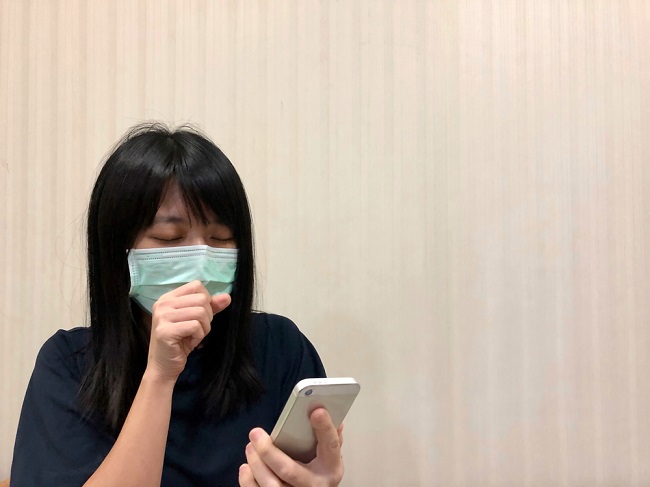Blood culture is a diagnostic method for detecting the presence of microorganismsin the blood. Microorganismsthecanbacteria, mold, orparasite.
Under normal conditions, blood should be sterile from various microorganisms. If microorganisms are present in the blood and cause infection, the condition is known as bacteremia or septicemia. If microorganisms continue to multiply and spread, and are not handled properly, the sufferer can develop sepsis which is an inflammatory reaction throughout the body.

Bacteremia that does not cause serious symptoms or is not detected, can heal on its own, especially bacteremia caused by Streptococcus pneumoniae or Salmonella. However, if the bacteremia is accompanied by a serious bacterial infection, such as pneumonia or meningitis, intensive treatment is necessary. Untreated bacteremia can lead to death.
The process of taking blood samples and examining blood cultures is quite simple. The doctor will examine the patient's blood sample in the laboratory.
Blood Culture Indications
A blood culture test will be recommended if bacteremia is suspected. Symptoms of bacteremia that can be observed include:
- Headache.
- Weak.
- Hard to breathe.
- Shivering.
- Fever.
- Heart palpitations (palpitations).
- Muscle ache.
If not treated properly, bacteremia can develop into sepsis which can be accompanied by damage to various organs in the body. Symptoms of sepsis can include symptoms of pre-existing bacteremia, plus the following:
- Dizzy.
- Nauseous.
- Mottled skin.
- Decrease in blood pressure.
- Loss of consciousness.
- Decreased urine production. Decreased organ function
Blood clots occur in many blood vessels. Blood cultures are recommended for people who are suspected of having bacteremia after undergoing surgery, having heart valve surgery, or being treated with immunosuppressive drugs. Patients who have recently undergone these medical procedures have a high risk of developing sepsis. In addition, blood cultures are also recommended for infants and children who are suspected of having an infection, even if they do not cause any symptoms. Several other risk factors that also make a person more susceptible to bacteremia and are recommended to undergo a blood culture procedure, include:
- Suffering from diabetes.
- Has cancer.
- Suffer from autoimmune disease.
- Have HIV or AIDS.
Blood Culture Warning
Blood sampling and blood culture procedures rarely cause serious side effects or complications. However, it is also necessary to pay attention to some risks that can occur, such as:
- Infection.
- Faint.
- Hematoma, which is bleeding under the skin tissue.
- Bleeding, especially if the patient has a blood clotting disorder or is taking blood-thinning medications, such as aspirin or warfarin.
- In certain cases, the vein where the blood sample was taken may become swollen. This condition is called phlebitis.
Blood Culture Preparation
Generally, patients who will undergo blood culture tests do not require special preparation. However, patients are required to inform their doctor about any medications (especially antibiotics or antifungals) and dietary supplements that they are currently taking because they are concerned that they may affect the results of blood cultures.
Blood Sampling Procedure
The first step in taking blood samples is skin sterilization at the blood collection site. The location for blood sampling is generally a vein in the upper arm. The skin will be cleaned using an antiseptic to prevent infection and contamination of the blood sample by bacteria. After that, the patient's arm will be tied so that blood can collect in the vein and clarify the location of the vein to facilitate blood sampling.
The doctor will insert a sterile needle into the patient's vein, then insert a small vial to collect the blood. So that the bacteria or fungi that infect the patient can be detected properly, the doctor will take blood samples from several locations in the body. In adults, the doctor will take blood samples at 2-3 locations. The doctor will also take several blood samples on different days so that the results of the blood culture diagnosis are more accurate.
After the patient's blood is drawn, the blood sampling point is then covered with a special tape to prevent infection and stop bleeding. The blood sample is then taken to a laboratory for examination.
Blood Culture Examination Procedure
The blood sample that has been taken from the patient will be grown in a special medium, generally a liquid medium. The medium that has been added to the blood sample from the patient will be stored in a special storage room to grow microorganisms that are suspected to be present in the blood. The length and storage conditions of the blood sample will vary depending on the type of bacteria you want to see. The average length of time for bacteria to multiply is 5 days, although some bacteria can take up to 4 weeks.
If a person's blood culture results are positive, indicating the presence of bacteria in the blood, the doctor may perform a test for bacterial resistance to antibiotics. Bacterial resistance test aims to determine the type of antibiotic that is most effective in eradicating the bacteria. Bacterial resistance tests are usually carried out for 24-48 hours.
If blood cultures from several samples show different results, for example, arm blood samples show positive results and negative results from other parts, it can be suspected that there is an infection of the skin or contamination of the sample. If the blood culture does not show any microbial growth during the few days of incubation, the blood culture can be said to be negative. If the blood culture test result is negative but symptoms of infection persist, the doctor may recommend that the patient undergo additional tests to confirm the presence of infection.
Keep in mind that to detect viral infections using blood cultures, a special growth medium is needed that is different from the growth medium for bacteria or fungi. Doctors will recommend patients to undergo other tests if a viral infection is suspected.
After Blood Culture
If the results of a blood culture test indicate the presence of an infectious microorganism in the blood, the doctor will prescribe an antibiotic or antifungal treatment according to the microbe causing the infection. If the cause of the infection is bacteria, the doctor will give you a broad-spectrum antibiotic treatment by injection. If through a bacterial resistance test it is known which type of antibiotic is effective, the doctor will provide antibiotic treatment according to the results of the resistance test.









